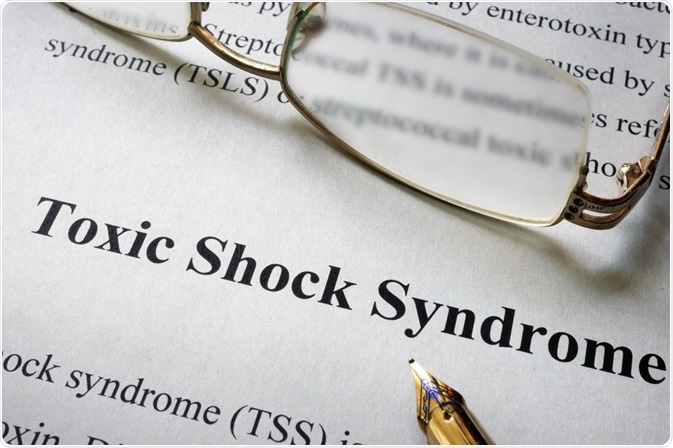Toxic shock syndrome is a rare illness involving a broad inflammatory response and multi-organ failure as a result of exposure to bacterial toxins.

Image Credit: Vitalii Vodolazskyi / Shutterstock.com
James K. Todd was the first to describe the syndrome in 1978 when he noticed seven children with similar symptoms, each of which was infected with Staphylococcus aureus bacteria. Since this observation, the incidence of toxic shock syndrome rose significantly throughout the following decade until it reached a peak in the 1980s. From that point, the incidence of toxic shock syndrome continues to decline and is now seen as a relatively rare condition.
Current incidence
Toxic shock syndrome can affect anyone in the population, including women, men and children, although it is best known for affecting menstruating women.
Data from research conducted over the period of 2000-2006 reported that the incidence of toxic shock syndrome remains low and stable. Of all population groups, the incidence per 100,000 people was 0.52. Some particular population groups, such as women aged between 13 and 25 years, were more likely to be affected by the syndrome, with an incidence of 1.41 per 100,000.
Women who are menstruating and use tampons are at a greater risk of suffering from toxic shock syndrome and, for this reason, the incidence in this population is higher. Some research has indicated a significantly higher incidence when considering at risk populations of women who use tampons regularly. These studies include incidence values ranging to a maximum of 17 per 100,000 women.
High absorbency tampons
In 1978, Procter and Gamble released a new design of tampons under the brand Rely that was intended to contain the menstrual flow without leaking or requiring frequent replacement. There was a controversial marketing campaign involving free samples to millions of women to try the tampon that “blossomed” into a cup shape to absorb every drop of menstrual fluid.
However, in the early 1980s, epidemiological studies reported toxic shock syndrome occurring with an increasing incidence in menstruating women. The majority of the affected women showed signs of Staphylococcus aureus infection and the incidence of the syndrome continued to rise until it reached epidemic status.
Later that year, users of Rely tampons associated with an increased risk of toxic shock syndrome, which led Procter and Gamble to respond by recalling the product. However, Rely was not the only tampon product available that had led to the increased incidence of the syndrome.
It has since been shown that high absorbency tampons are associated with an increased risk of toxic shock syndrome, regardless of the design or brand.
Toxic Shock Syndrome: Way Beyond Tampons
Public health intervention and incidence
When the association between tampons with higher absorbency and toxic shock syndrome became clear, public health interventions were initiated to decrease the incidence of the condition.
In particular, changing the tampon regularly to avoid using a single tampon for an extended period of time was essential for young menstruating women. This message was widely publicized to the population, including specific warnings on the packaging and instructions for tampon products.
This public health initiative is largely to account for the decrease in the incidence of toxic shock syndrome since the 1980s and its relative rarity today. However, menstruating women are not the only population that can be affected by toxic shock syndrome, and men, children, and non-menstruating women can also be affected.
References
Further Reading
Last Updated: Mar 23, 2021